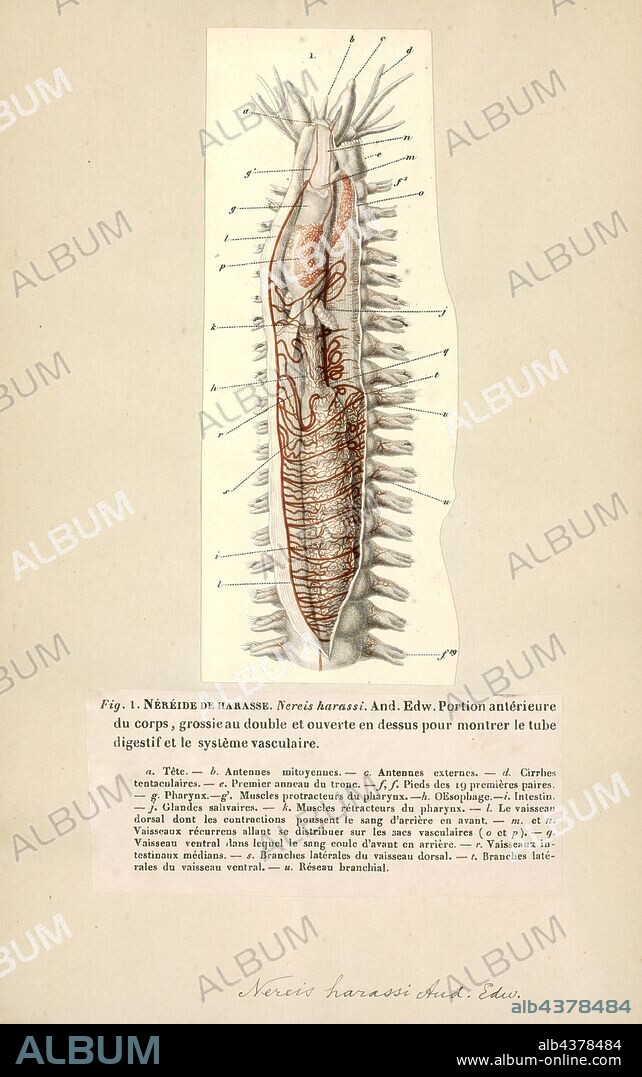alb4378484
Nereis harassi, Print, Nereis is a genus of polychaete worms in the family Nereididae. It comprises many species, most of which are marine. Nereis possess setae and parapodia for locomotion. They may have two types of setae, which are found on the parapodia. Acicular setae provide support. Locomotor chaetae are for crawling, and are the bristles that are visible on the exterior of the Polychaeta. They are cylindrical in shape, found not only in sandy areas, and they are adapted to burrow. They often cling to seagrass (posidonia) or other grass on rocks and sometimes gather in large groups. They are dangerous to touch giving very painful long lasting burns... In Maltese they are called BUSUF.

|
Añadir a otro lightbox |
|
Añadir a otro lightbox |



¿Ya tienes cuenta? Iniciar sesión
¿No tienes cuenta? Regístrate
Compra esta imagen

Descripción:
Ver traducción automática
Nereis harassi, Print, Nereis is a genus of polychaete worms in the family Nereididae. It comprises many species, most of which are marine. Nereis possess setae and parapodia for locomotion. They may have two types of setae, which are found on the parapodia. Acicular setae provide support. Locomotor chaetae are for crawling, and are the bristles that are visible on the exterior of the Polychaeta. They are cylindrical in shape, found not only in sandy areas, and they are adapted to burrow. They often cling to seagrass (posidonia) or other grass on rocks and sometimes gather in large groups. They are dangerous to touch giving very painful long lasting burns... In Maltese they are called BUSUF
Crédito:
Album / quintlox
Autorizaciones:
Modelo: No - Propiedad: No
¿Preguntas relacionadas con los derechos?
¿Preguntas relacionadas con los derechos?
Tamaño imagen:
3314 x 5288 px | 50.1 MB
Tamaño impresión:
28.1 x 44.8 cm | 11.0 x 17.6 in (300 dpi)
Palabras clave:
ADAPTADOS • ADHERIRSE • CERDAS • CESPED • CYLINDRICAL • ESPECIES • EXTERIOR • FAMILIA • FAMILIAR • FORMA • IMPRESION • MADRIGUERA • MALTES • MARINA • PELIGROSAS • PIEDRA • PIEDRAS • POLIQUETOS • ROCA • SHAPE
 Pinterest
Pinterest Twitter
Twitter Facebook
Facebook Copiar enlace
Copiar enlace Email
Email
